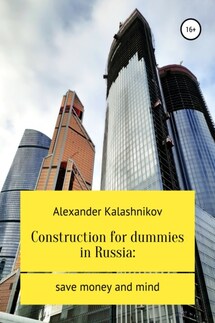Construction for dummies in Russia: save money and mind - страница 5
But in fact, it was impossible to use such fasteners, because the wall of the brick is very thin (10-15 mm) and practically the anchor only holds on to it, because the brick inside is completely empty, as in the figure – this is the old Soviet brick “Kabanchik”, which is already have not been produced for a long time.
Yes, this project passed the state examination , it was accompanied by acts of testing chemical anchors for pull-out, which supposedly had to securely fix the brackets on this particular building, but nevertheless, this is what happened.
When performing facade work, it is always necessary to test specific anchors for pull-out from a particular wall or object, which must be confirmed by test reports. Accordingly, we called a testing laboratory to the site, which is very common with manufacturers or suppliers of fasteners. Tested chemical anchors. None of the 5 or 6 attempts to confirm their suitability was successful – the brick walls broke under the most minimal (up to 150-200 kg.) Loads.
When asked how the same laboratory (by the way, a world-famous manufacturer, I’ll regret their reputation …) gave the designers a conclusion that chemical anchors of such a length can be used on this object, the answer was something like this : “We don’t know, a person who we have this act issued, it no longer works for us … ”. I repeat, the project with this fastener passed the state examination .
At the same time, we also tested conventional facade anchors with a longer length – 250 mm, which successfully passed the tests, because. they were fixed in ordinary masonry, which followed the facing hollow brick. Having received new test reports, we refuted the design solution, for the third time I repeat, which passed the state examination , and received permission from the customer to use extended length conventional anchors. Question substitutions one anchor to another was also affected by an increase in the cost of fasteners, but with respect to other aspects, nevertheless, this allowed us to get out of the situation at relatively low costs.
However, there were some consequences:
1. Due to carrying out all the tests and agreeing to replace the anchors, a week of time was spent, which led to a delay in the completion of work for this period.
2. For the delay in obligations for this week, the customer (and the contract was state-owned) first presented us with a penalty, although in fact he was to blame. In such situations, government customers never accepted the argument that the time it took to correct the documentation was not our fault, but their own. It is not customary for them, otherwise the performers (technical supervision, department heads, etc.) will then receive a cap for violating the deadlines for carrying out work and failing to take action against contractors. After refusing to pay the penalty, the customer sued us and sued her.
3. We used more expensive anchors, no one compensated us for the difference in price, again because there is an estimate approved in the budget – please be kind enough to fit into it. This is called “replacement without increasing the value of the contract”. Although the increase in the cost of fasteners was about 20%.
Prevention measures.
1. Extremely vigilantly compare not only the estimate with the project, but also the project with the real object.






